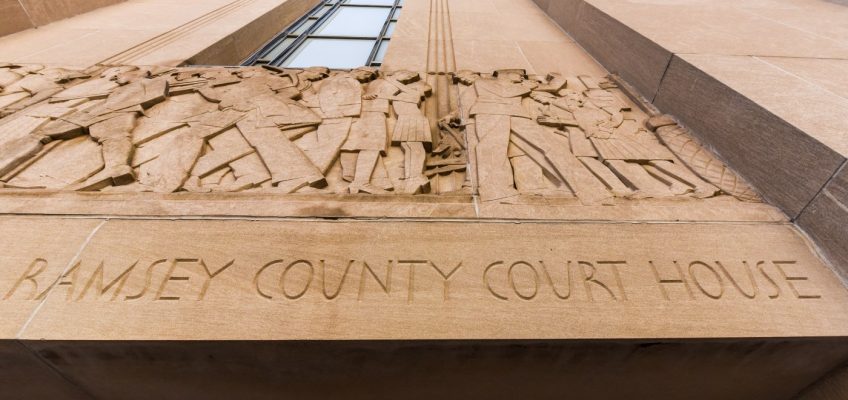Property taxes across Minnesota could increase by a total of up to $1 billion next year under approved levy increases from counties, cities and school boards and other taxing districts adopted in 2025.
The increases, payable in 2026 and reported by the state Department of Revenue this week, continue a trend in the 2020s as inflation continues to drive up operational costs, according to groups representing local governments.
Statewide, levies could reach up to $14.6 billion next year, an increase of 6.9% from 2025. The final number is typically lower than the maximum set in preliminary numbers and is used as a starting point for governments as they set final levies.
Final property taxes are set by the end of the year, after local governments calculate estimates for individual parcels and send property owners truth-in-taxation notices sometime in November. Taxing authorities must hold public input meetings before they set final levies on Dec. 29. To find out about truth-in-taxation hearings in your county, check their website.
Minnesota property taxes totaled around $13.7 billion in 2025. In 2020, around $10.9 billion was collected statewide, according to data from the Department of Revenue.
Year-by-year
Final statewide increases in recent years were as follows, state data shows:
• 2025 — 5.6% or $718.6 million.
• 2024 — 6.4% or $775 million.
• 2023 — 5.4% or $626 million.
• 2022 — 3.9% or $431 million.
• 2021 — 2.1% or $226 million.
• 2020 — 4.6% or $501 million.
Federal challenges
Changes at the federal level under the administration of President Donald Trump add another potential cost driver with new eligibility requirements for assistance programs like Medicaid, according to the Association of Minnesota Counties.
“Nuts and bolts” costs like staffing, employee benefits, capital costs and even gas prices are all up, said Matt Hilgart, a lobbyist with the group. But unpredictability and new rules from higher levels of government mean new staffing needs and expenses for counties.
“New mandates coupled with reductions in reimbursements to local governments — particularly counties — are creating this situation where we’re levying now to either hire people to fulfill a mandate that we’ve been told to do by the state or federal government,” he said. “It feels like we’re handcuffed.”
As Trump and a Republican-controlled Congress passed the tax package dubbed the “big beautiful bill” this summer, counties were concerned that they could face financial strain from new administrative requirements on Medicaid and SNAP — the Supplemental Nutrition Assistance Program. Supporters of the bill touted its tax breaks for individuals.
Ramsey County levy
In Ramsey County, which approved a levy hike of 9.75%, or $38.6 million, the biggest drivers of expenses were unfunded mandates from the state of Minnesota, employee compensation and “directing resources to our core services and improving our organizational performance,” County Manager Ling Becker said in September.
About 46% of Ramsey County’s upcoming budget is funded through property taxes. The rest comes from the state, federal and other local governments, plus service fees and other sources. The county raised its levy by 4.75% in 2025, 6.8% in 2024 and 4.5% in 2023.
Statewide, counties raised their levies by an average maximum of 8.1%, up from previous years, when it was around 5% to 6%. Cities raised levies by a projected average maximum of 8.7%, roughly in line with recent trends. Schools raised levies by a projected average maximum of 5.8%.
A levy increase is not a property tax increase. If a person owns property in a community that has seen new development, like businesses or homes, it can offset the levy’s effect on the actual tax bill.
It would be hard for that to happen in Ramsey County since it has limited opportunities for property tax base growth, particularly as the state’s smallest county, Hilgart said. The county also has high social services costs, posing another challenge.
The expected maximum statewide increase in 2026 would be the highest of the 2020s if it holds, but the final increase typically falls anywhere between 8% and 15%.
Last year, the revenue department projected a maximum total increase of $781.6 million for 2025 — 6.1% higher than 2024. It ended up being $63 million lower — a 5.6% increase.
The change was supposed to be even greater between 2023 and 2024, when state officials predicted a maximum levy increase of 7.3% or $882.1 million statewide. It ended up being $104.4 million lower — a 6% increase.
School districts
School districts are concerned about uncertainty with federal funding, according to Kirk Schneidawind, executive director of the Minnesota School Boards Association, though inflation and a growing reliance on local levies for funding play a more significant role.
“Increases from the state have not kept up with inflation,” he said. “To continue programs and opportunities … we’ve got to find ways to generate revenue.”
Minnesota’s 2023 education bill included funding increases of up to 3% to address inflation, but two years is not enough time to fix a long-term problem, Schneidawind explained.
St. Paul Public Schools was one of many districts where voters approved a levy referendum in the Nov. 4 general election. Starting in 2026, the district’s general revenue will increase by $1,037 per pupil for 10 years. It’s expected to raise around $37.2 million for the district.
More information on preliminary property tax levies can be found on the revenue department’s website at revenue.state.mn.us/preliminary-property-tax-levies.
Related Articles
Senate takes first step toward ending the government shutdown
Two more special elections coming to Minnesota Capitol
Government shutdown could become longest ever as Trump says he ‘won’t be extorted’ by Democrats
Better parks? Safer streets? Greener neighborhoods? Students asked to enter “Mayor For a Day” essay contest
Minnesota’s federal workers plead for resolution of government shutdown


Leave a Reply